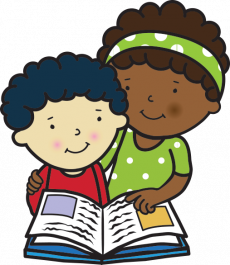How Does Interactive Reading Support Literacy Development in KS1
Introduction: The Role of Interactive Reading in Literacy Development
Interactive reading is a dynamic approach to literacy that actively involves pupils in the storytelling process, thereby breathing life into traditional reading sessions. It transforms the learning environment by embracing visual cues and interactive elements that inspire children to explore language in new ways. This method not only cultivates an enthusiasm for reading but also fosters the early stages of writing development.
environment by embracing visual cues and interactive elements that inspire children to explore language in new ways. This method not only cultivates an enthusiasm for reading but also fosters the early stages of writing development.
By making reading an interactive experience, educators can build the confidence of KS1 pupils and empower them to experiment with sentence structure and creative expression. Interactive reading transforms an otherwise passive activity into an engaging, hands-on adventure. This approach ultimately lays a firm foundation for lifelong literacy by encouraging an active dialogue between teachers and learners.
Engaging KS1 Pupils Through Interactive Reading
Interactive reading captivates primary school pupils by involving them directly in the narrative process. Teachers use a variety of sensory and visual techniques to spark interest, thereby making the act of reading a shared, immersive experience. This involvement not only holds the attention of young readers but also transforms the learning process into an enjoyable communal activity.
Through interactive reading, teachers invite pupils to become co-creators of the story, thus nurturing an eagerness to learn and communicate. The active participation in dialogue and discussion strengthens both reading comprehension and critical thinking. Such a dynamic classroom environment naturally boosts literacy interest while making learning engaging and fun.
The Impact of Colourful, Tactile Resources on Literacy Outcomes
Colourful, tactile materials form an integral part of interactive reading by providing visual and physical stimulation that enhances the learning experience. These resources, including vibrant image tiles and textured props, capture pupils' imaginations and make literacy lessons memorable. The use of such engaging materials helps establish a direct link between language and sensory experience.
Enhancing Sentence Formation and Comprehension with Storytelling
Storytelling is a vital tool in developing a solid foundation for sentence formation among young learners. By listening to and participating in stories, pupils learn how sentences are structured and how ideas are cohesively linked. This process helps in developing both creative expression and logical thinking, essential components of early literacy.
Interactive narration further enriches comprehension by ensuring that every sentence contributes to the overall narrative. As teachers weave in prompts and questions during story-telling sessions, pupils are encouraged to think critically about what they hear. This deliberate practice reinforces key language concepts, making the journey from word recognition to full comprehension a natural progression.
Teacher-Led Sessions: Providing Scaffolded Support in Literacy
Teacher-led sessions are pivotal in offering personalised and scaffolded support that addresses the individual needs of each child. In these sessions, educators guide pupils through interactive reading exercises that simplify complex language concepts into manageable steps. This method ensures that every child, regardless of their starting point, engages with the content at an appropriate pace.
Scaffolded support in literacy means that teachers can provide immediate feedback and tailor activities to aid comprehension, reinforcing both confidence and competence in writing. By breaking down language skills into smaller, more digestible components, every pupil receives the help they require to progress successfully. This guided approach builds a strong foundation that paves the way for advanced literacy achievements in later years.
Addressing the Needs of Second Language and Special Educational Needs Pupils
For second language learners and special educational needs (SEN) pupils, traditional literacy methods can often present significant challenges. Interactive reading strategies use visual aids and tactile resources, which help bridge the gap for these learners by providing a multisensory experience.  This approach makes it easier for pupils to grasp language concepts and to form sentences more effectively.
This approach makes it easier for pupils to grasp language concepts and to form sentences more effectively.
By employing tools such as the Mighty Writer Resource and scaffolded teacher support, teachers can tailor learning to accommodate diverse needs. The interactive elements ensure that even those who struggle with conventional methods are given ample opportunities to participate and learn at their own pace. This inclusive strategy not only boosts comprehension but also ensures that every pupil feels supported and capable of achieving literacy success.
Conclusion: Unlocking Potential Through Engaging Reading Strategies
Interactive reading has proven to be a transformative approach to literacy development, making the process both engaging and effective for KS1 pupils. The combination of interactive storytelling, colourful tactile resources, and innovative tools like the Mighty Writer Resource creates an exciting learning environment. This integration of dynamic teaching methods supports both confidence and competence in early language development.
By embracing interactive reading strategies, teachers can unlock the potential of every pupil, making literacy an enjoyable and inclusive journey. The benefits of these methods are clear, from improved sentence formation to enhanced overall comprehension. Ultimately, adopting these engaging strategies will not only enrich literacy outcomes but also inspire a lifelong love of learning among young readers.

